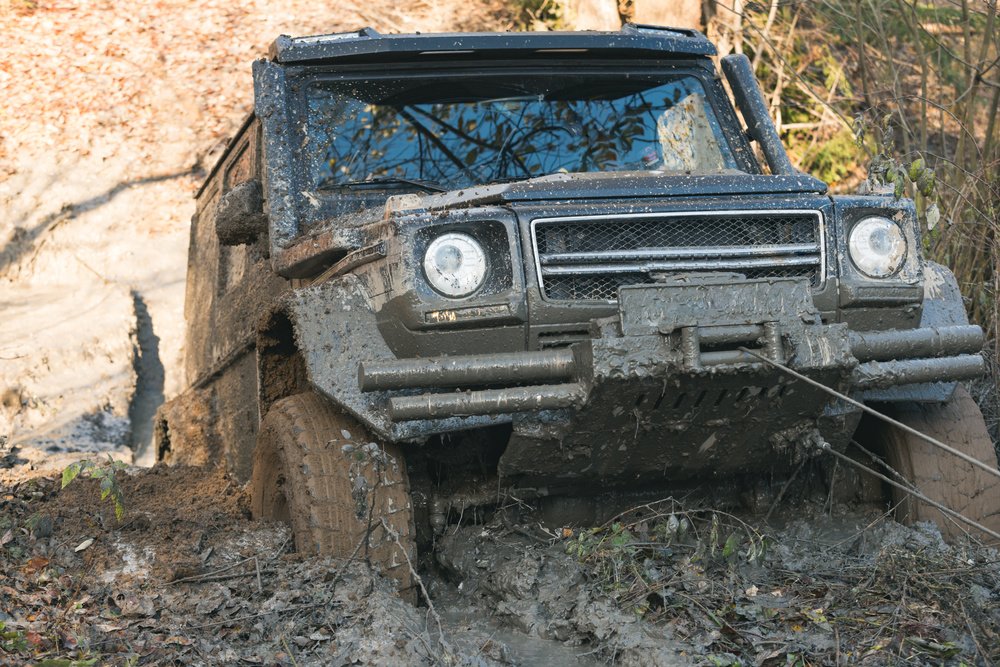Do You Need a Winch to Safely Overland Off-Road
Avid overlanders can spend a small fortune on equipment over many years of outdoor adventures. Some pieces of equipment are more expensive than others and last longer than others. For instance, some winches will run you a lot more than a selection of our patented cam straps. But do you really need a winch to safely overland off-road?
From a practical and technical aspect, no. But take it from us, you’ll need one and we recommend Warn for all your winch needs. It’s what got us out of this.
Winches can be critical pieces of your kit for overlanding experiences. At any time, they are a nice addition for when you’re ready to take your rig to the next level. Just remember that the expense of adding a winch isn't just the winch itself. You also need to consider a bumper and even a reinforced suspension.
If you’re not ready for a full winch set up, there are other things you can do to guarantee easier recovery in the middle of nowhere:
Maintain Your Tires
Well-maintained tires with adequate tread represent the most important tool that you need to stay out of trouble. Go off-road with insufficient tires and you are asking for trouble. Just don't do it. Making sure your tires are up to par can greatly reduce the chance of getting stuck in mud, sand, or whatever else mother nature throws at you.
Keep your spares secure to your rig using Rollercam straps just in case you run into trouble on (and off) the road.
Learn to Manipulate Tire Pressure
Every overlander who goes off-road should take the time to learn how to manipulate tire pressure according to the surroundings. Tire manufacturers share information about maintaining tire pressure consistent with what the owner's manual says. But those tire pressures relate to normal, on-road use.
Optimal tire pressure makes a vehicle easier to handle on the road. It mitigates wear and reduces fuel consumption. Things change once you turn off the road.
Slightly reducing tire pressure can make for a more comfortable ride on stone, gravel, dirt, or otherwise bumpy surfaces. Should you find yourself in a location that promises to be tough to get out of, lowering tire pressure even further could be the difference between driving out of the mud and getting stuck in it.
Lowering tire pressure puts more of the tire in contact with the ground. This increases friction and improves grip. To pull this off, you need to carry a compressor so that you can get your tire pressure back up to normal when need be.
Tire Mats Are a Good Idea
Are you the type of overlander who thinks tire mats are for wusses? Think again. As The Compass puts it, tire mats are "too affordable and useful to not bring them along." A good set of tire mats could be your salvation in the middle of the woods on a rainy day.
We recommend MAXTRAX for this. That image above from when the mobile Rollercam® HQ got stuck? We used more than six MAXTRAX before we got out of there.
Bring Along a Recovery Strap
Another piece of kit you should always carry with you is a recovery strap. It could be useful with or without a winch. What is a recovery strap? It is a rated kinetic strap with bow shackles strong enough to withstand the punishment of pulling another truck out of a jam.
For the record, a recovery strap is not the same thing as a cam strap. Think of it as a cam strap on steroids – a lot of steroids. A recovery strap connects your stranded vehicle to another. Likewise, you can help other people out of their jams by keeping one on board.
An electric winch is a great piece of equipment to have on your overlanding rig. But it is not a critical piece of equipment. Plenty of overlanders get by just fine without one, but we’ll never go without again.




